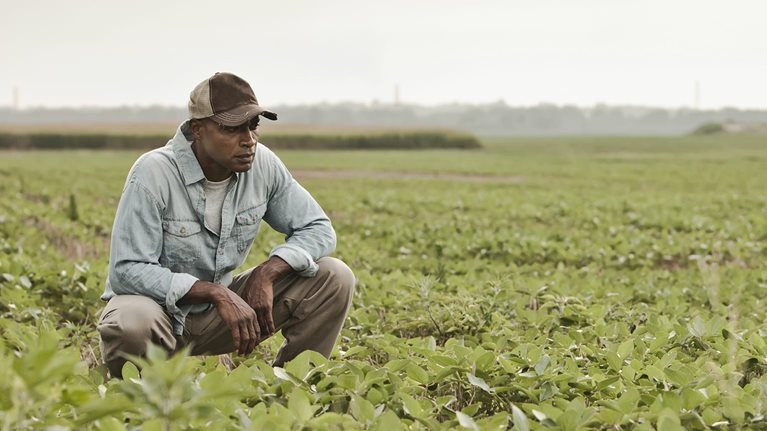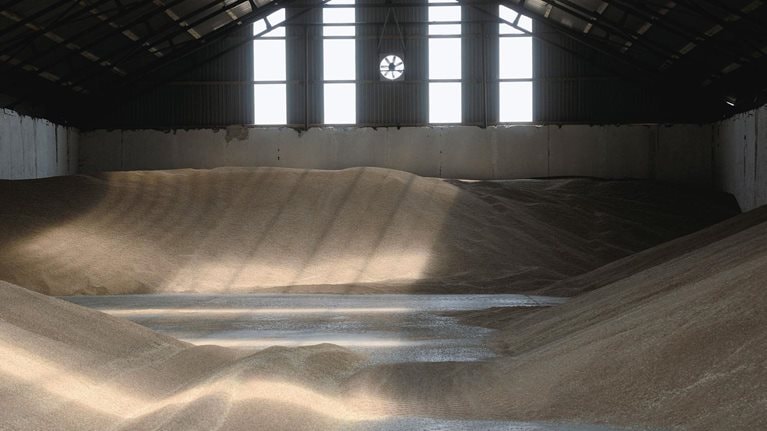Supply chain disruption, geopolitical uncertainty, and climate change are contributing to above-average price volatility and inflation. To find out how farmers are addressing these challenges, McKinsey surveyed more than 1,300 US row- and specialty-crop farmers in May 2022. Their responses reveal that farmers are regarding the future with cautious optimism and that it is more important than ever for farmers to capture the most from every acre.
Near-term trends for farmers
The following exhibits highlight the issues and attitudes likely to shape farmer purchasing and planning activity in the coming months.
Rising input costs are a major concern
More than half of growers with small- to medium-size farms (less than 2,000 acres and 2,000 to 5,000 acres, respectively) and two-thirds of growers with large farms (more than 5,000 acres) believe they will be paying 10 to 20 percent more for key inputs over the next 18 months. Fertilizer, crop protection, and labor are the top three areas in which farmers are experiencing cost increases (Exhibit 1). Across the United States, 80 percent of farmers ranked rising input costs as the number-one risk to profitability (Exhibit 2).
Most US farmers believe they will maintain—or even increase—profitability
Despite current uncertainties, farmers are feeling cautiously optimistic about their growth prospects. Roughly 60 percent expect their profitability to hold steady or even increase over the next two years (Exhibit 3). That optimism is driven by a steady uptick in crop prices. With inventories of core commodities at five-year lows, asking prices have been soaring. Looking ahead, farmers expect demand to remain strong: nearly 65 percent believe crop prices will trend upward through 2024.
Farmers are changing purchasing behaviors
Farmers are changing their purchasing strategies, including buying earlier and focusing on input prices. Aiming for continuous improvement, farmers want to try new products and technology. For example, about 50 percent expect to use new yield-increasing products.
Preference for digital-only interactions has not increased over time, while omnichannel is becoming the preferred approach to support farmers in their purchasing journeys. More than 50 percent of farmers view customization of recommendations and adequate customer service as the largest challenges in purchasing online. Online marketplaces for selling crops have not seen widespread adoption, with direct sales and cooperatives still being the preferred channels.
Timing of purchases is also shifting, with close to 50 percent of large farmers and 40 percent of small farmers planning to buy inputs earlier in the growing year. Volatility is also affecting when growers sell their harvests: roughly 50 percent of medium- and large-scale farms intend to sell more crops forward (Exhibit 4).
Additionally, loyalty is up for grabs as farmers search for value and are willing to experiment with new offerings. Nearly 30 percent of large farmers say that brand loyalty is less of a priority when selecting farm equipment than it was five years ago (Exhibit 5).
Small and large farms are pursuing different paths to profitability
Growers with more than 5,000 acres are far more likely than those with smaller holdings to lean on technology to give them a marketplace edge. One-third say that they will purchase innovative equipment over the next two years, and 27 percent say that they will invest in technology that can help them improve their ability to trade their crops. Small growers, by contrast, are more likely to embrace product-based innovation. Just over half say that they will invest in products designed to increase yield, and 38 percent will try new crop protection products (Exhibit 6).
Agtech is growing deeper roots
Farmers are using agriculture technology to support more farming operations. Tools that might have seemed niche just a few years ago have gained more acceptance. Nearly 55 percent of large farms today use farm management systems, and more than 50 percent of large farms use some form of precision agriculture hardware. Nearly a quarter of small farms use this technology or intend to use it over the next two years (Exhibit 7). Automation, robotics, and electrification are also catching on. The larger the operation, the greater the interest in such technologies.
The field of agribusiness marketplaces is the tech arena poised to see the most growth in adoption between now and 2024. Fifteen percent of large-scale farmers currently use these digital ecosystems to enhance their commodity-trading capabilities. But nearly a quarter more plan to start engaging in agribusiness marketplaces to sell outputs over the next two years.
Farmers are adopting sustainable practices
More than 50 percent of farmers now employ low-tilling or no-tilling practices or the use of cover crops (Exhibit 8)—though this is still behind the adoption rates seen in some Western European countries (where there is 80 percent adoption of cover crops) or Brazil (with more than 80 percent adoption of no-till practices). There is a big opportunity in the adoption of new practices such as stormwater management or biocontrols and in the increased penetration of existing practices into more acres per farm (currently, low- or no-till penetration per farm is only 50 to 60 percent). Specialty-crop farmers are leading the way on sustainability: close to 70 percent use cover crops, more than 50 percent use controlled irrigation, and nearly 30 percent use on-farm renewable energy.
The number and complexity of sustainability programs have expanded dramatically outside of government-sponsored plans. For example, 40 to 50 percent of farmers suggest that they aren’t participating in a carbon program for three primary reasons: ROI is not high enough, it was not offered to them, and they do not understand the program (Exhibit 9).
There is growing momentum for agricultural biological solutions
Products derived from naturally occurring microorganisms, plant extracts, and other organic matter are gaining currency. This is especially true for large farms. Twenty percent of these growers say that they use or plan to use biostimulants, and about 30 percent use or plan to use biofertilizers or biocontrols (Exhibit 10). Top-ranked motivators include lower costs per acre compared with other products, better overall efficacy, and a better ROI than alternative solutions. There is still a lot of opportunity in biological solutions in the United States—as compared to Brazil, where 60 percent of farmers have already adopted the use of biocontrols and biostimulants.1
What can suppliers do to support farmers?
In these uncertain times, winning suppliers will become strategic partners of farmers to support them in their growth and innovation efforts. To do that, suppliers must be more agile in adapting their operating models to farmers’ changing needs and purchasing behaviors. For example, suppliers could do the following:
- Rethink their approach to engaging with farmers. Suppliers could use data and analytics to refresh their value proposition and market segmentation. They could employ omnichannel approaches to engage more with farmers and be proactive across offline and online channels.
- Become the innovator and partner of choice. When farmers are looking to try new products and technologies to increase yields and reduce costs, suppliers can become the partner to provide such innovation. For example, they could invest in the design of programs that make it easier for farmers to try new products and services.
- Offer personalized products and services to growers. Use dynamic sales strategies and in-season analysis to serve the right farmers at the right time. Suppliers could use contextual farmer and field data to facilitate the personalization of field teams (for example, macroeconomic and field-level remote-sensing data).
- Help farmers monetize adoption of sustainable practices. Make connections across the supply chain and find ways to support implementation and expand penetration and new-practice adoption.
- Make new sustainability programs accessible and easy. Simplify participation and monetization terms, and support traceability of environmental impacts.
US farmers see volatility as both a risk and an opportunity. In this uncertain era, they are pursuing continuous-improvement efforts. Furthermore, they are seeking profitable growth and innovation, trying new products, and increasing the use of technology in their operations. However, growers are also clear that they will need suppliers’ support in this time of change and will look for new ways to engage earlier, through more channels, and with less brand loyalty. This is the moment for suppliers to renew their partnerships with growers.


